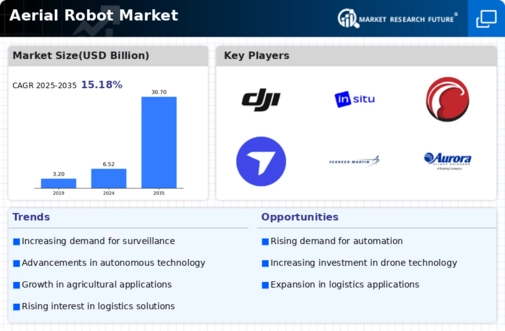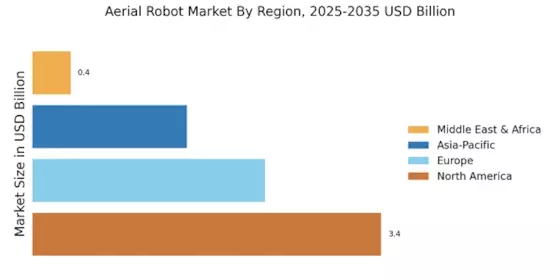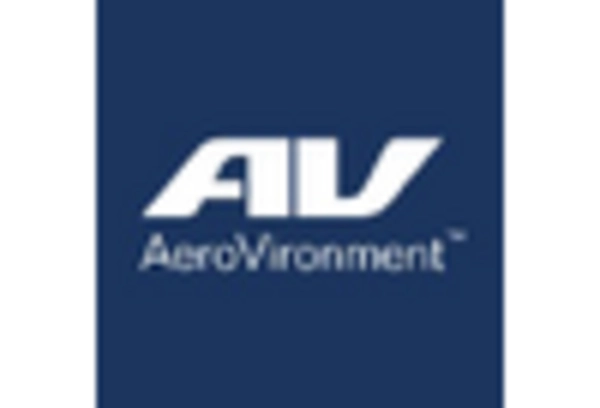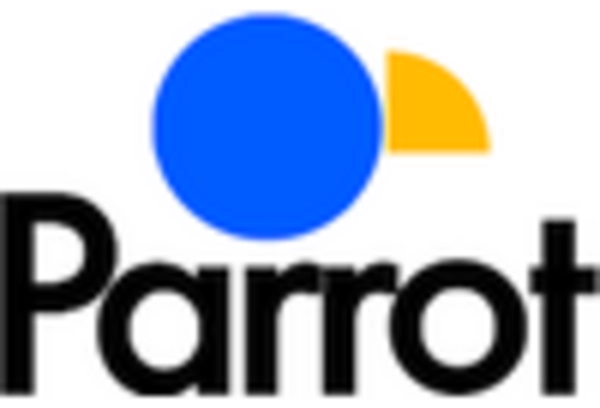Diverse Applications of Aerial Robots
The versatility of aerial robots is a significant driver for the Aerial Robot Market. These devices are being utilized across various sectors, including agriculture, construction, and emergency response. In agriculture, aerial robots are employed for crop monitoring and precision farming, which can lead to increased yields and reduced resource consumption. In construction, they assist in site surveys and inspections, improving efficiency and safety. The market data indicates that the agricultural segment alone is expected to account for a substantial portion of the market share, reflecting the growing reliance on aerial robotics for operational efficiency. This diversity in applications not only broadens the market's reach but also encourages innovation, as different industries seek tailored solutions. Consequently, the Aerial Robot Market is poised for sustained growth as it continues to explore new use cases.
Increased Investment in Aerial Robotics
Investment in the Aerial Robot Market is on the rise, driven by both private and public sectors. Venture capital firms are increasingly funding startups focused on aerial robotics, recognizing the potential for high returns in this burgeoning market. Additionally, government initiatives aimed at promoting technological innovation are providing financial support for research and development in aerial robotics. This influx of capital is likely to accelerate advancements in technology and expand the range of applications for aerial robots. Market analysts suggest that the total investment in aerial robotics could reach several billion dollars in the next few years, reflecting the growing confidence in the industry's future. As investment continues to flow, the Aerial Robot Market is expected to witness significant growth, fostering a competitive environment that encourages innovation and efficiency.
Technological Advancements in Aerial Robotics
The Aerial Robot Market is experiencing rapid technological advancements that are reshaping its landscape. Innovations in artificial intelligence, machine learning, and sensor technology are enhancing the capabilities of aerial robots. For instance, the integration of advanced imaging systems allows for improved navigation and obstacle avoidance, which is crucial for applications in agriculture and surveillance. According to recent data, the market for aerial robots is projected to grow at a compound annual growth rate of over 20% in the coming years, driven by these technological improvements. Furthermore, the development of autonomous flight systems is enabling aerial robots to operate in complex environments, thereby expanding their utility across various sectors. This trend indicates a robust future for the Aerial Robot Market as it adapts to the evolving technological landscape.
Regulatory Developments Impacting Aerial Robotics
Regulatory developments play a pivotal role in shaping the Aerial Robot Market. Governments worldwide are establishing frameworks to ensure the safe integration of aerial robots into airspace. These regulations often focus on safety standards, operational guidelines, and privacy concerns, which are essential for public acceptance. For example, the implementation of remote identification requirements for drones is expected to enhance accountability and safety. As regulations evolve, they may facilitate the growth of commercial applications, particularly in sectors like delivery services and infrastructure inspection. The Aerial Robot Market is likely to benefit from these regulatory advancements, as they provide a structured environment for innovation and deployment. Moreover, compliance with these regulations can enhance the credibility of aerial robot manufacturers, potentially leading to increased market share.
Growing Demand for Aerial Surveillance and Monitoring
The demand for aerial surveillance and monitoring solutions is a key driver for the Aerial Robot Market. As security concerns rise globally, organizations are increasingly turning to aerial robots for effective surveillance capabilities. These devices offer real-time monitoring and data collection, which are invaluable for law enforcement, border control, and disaster management. The market data suggests that the demand for aerial surveillance applications is projected to grow significantly, with a notable increase in the adoption of drones for public safety and environmental monitoring. This trend indicates a shift towards proactive security measures, where aerial robots play a crucial role in enhancing situational awareness. Consequently, the Aerial Robot Market is likely to expand as more entities recognize the benefits of integrating aerial surveillance technologies into their operations.


















Leave a Comment